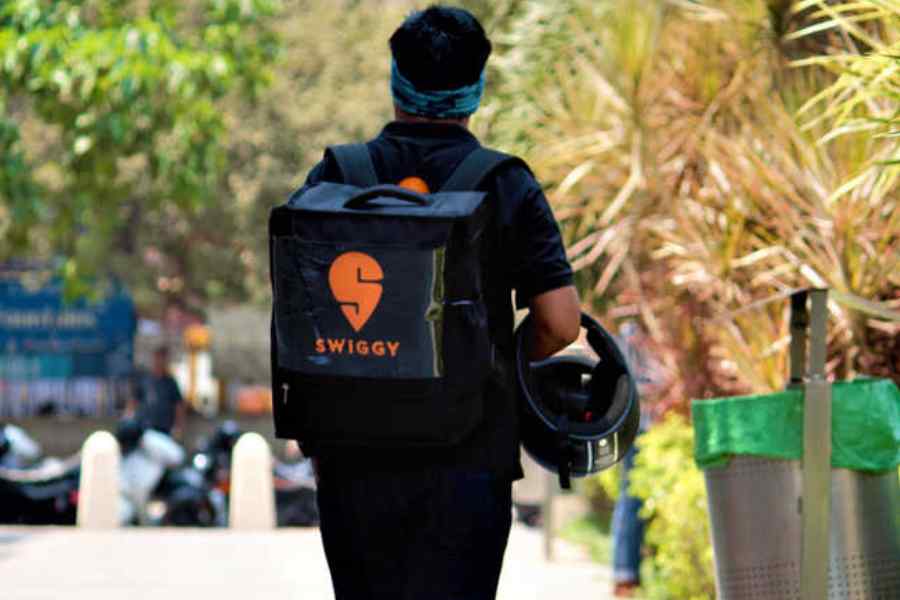 |
Polymer scientist Dipankar Chattopadhyay loves cooking. The humble arbi — scientific name Colocasia esculenta — seems to be his favourite. The low-flame cooking that Chattopadhyay, a scientist in Calcutta, specialises in does not usually result in a scrumptious Indian dish — instead, it yields a substance that can deliver a critical heart drug efficiently and safely into the human body.
Nearly 8,000 kilometres away in the small, old-world British town of Huddersfield, Vassilis Kontogiorgos swears by okra, or lady’s finger. A research team at the University of Huddersfield led by Kontogiorgos has identified a biomolecule in bhindi that may turn out to be a phamacologist’s delight. It has the ability to chaperon a drug to a location in the human body where it is needed.
Both these studies, reported last week in two different research journals, may still be in the early stages. But they could throw up inspiring results and boost scientists’ efforts to scour the plant kingdom for safer biomaterials that can deliver medicines effectively and in a sustained manner.
Chattopadhyay’s team at the University of Calcutta collected a thick glue-like substance that oozes from colocasia when the corms are boiled at relatively lower temperatures. After purifying it, they mixed it with a commercially available polymer to produce transdermal patches, which are normally stuck on the body close to the region where the drug needs to be delivered. The drug is normally sandwiched between different layers of the material to ensure prolonged and steady delivery.
Unlike orally taken drugs, transdermal patches help bypass the liver and hence are more suitable for medicines that are toxic to the liver or lose potency after passing through the digestive system.
For the Calcutta study, which was reported online in the International Journal of Biological Macomolecules last week, scientists used a drug called diltiazem, used for treating angina, hypertension and some types of arrhythmia. Their lab tests proved the effectiveness of the patches and subsequent tests on rats demonstrated that they don’t cause skin irritation.
“It delivers the drug in a sustained and effective manner for eight hours,” says Chattopadhyay. Commercially available transdermal patches normally retain the drug’s potency for up to two or three days. “The new material can also be made to last longer by tweaking the pore size,” he says.
 |
Though the procedure followed by the University of Huddersfield was somewhat similar, the biopolymers that they extracted from okra were used for oral delivery. Kontogiorgos has been working on extracting inexpensive and non-toxic biopolymers from the vegetable, whose global trade is estimated to be over $5 billion annually.
According to him, biopolymers found in lady’s finger are predominantly pectins — a class of substances widely used in the food processing industry. Pectins are used to give a jelly-like consistency to jams and marmalades.
“Their chemical structure seems to have unique properties. We do not know yet how they compare with other biopolymers as this is very new but promising research,” claims Kontogiorgos. The work appeared recently in the journal Food Hydrocolloids.
The UK scientists found that when drugs were incorporated into the biopolymers derived from okra, they not only showed remarkable stability but also prolonged the effectiveness of the drug.
“The benefits of prolonging drug delivery is that the drug has extended action, most likely at a lower dosage. Thus you reduce the side effects but activity remains or is enhanced,” he says.
Biopolymers usually protect drugs from the acidic environment of the stomach or other parts of the body. This is normally done by encapsulating the drug, say for example, into beads and then engineering the surface of the bead. Thus the drug can be released at the location where it is required. The release is triggered by the natural environment whether it is in the stomach, the duodenum or the colon.
“Cost-effective and safer drug delivery systems could be generated from these materials since these are abundantly found in nature,” says K. Sreenivasan, a polymer scientist with Sri Chitra Tirunal Institute of Medical Science and Technology, Thiruvananthapuram.
The extraction and further processing are through routine processes and do not involve expensive tools. Additionally these materials seem to be biodegradable and thus environment-friendly, he says.










